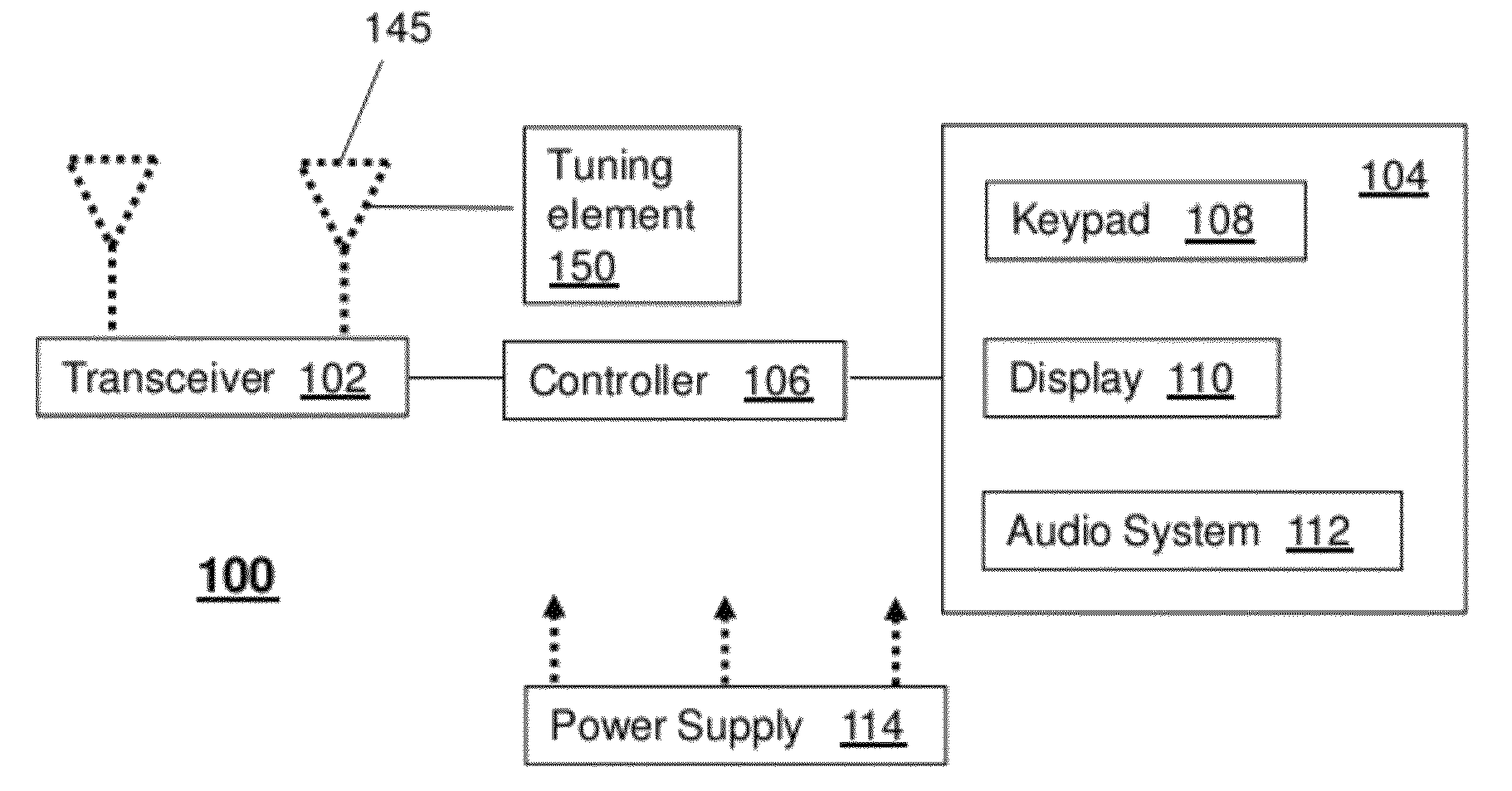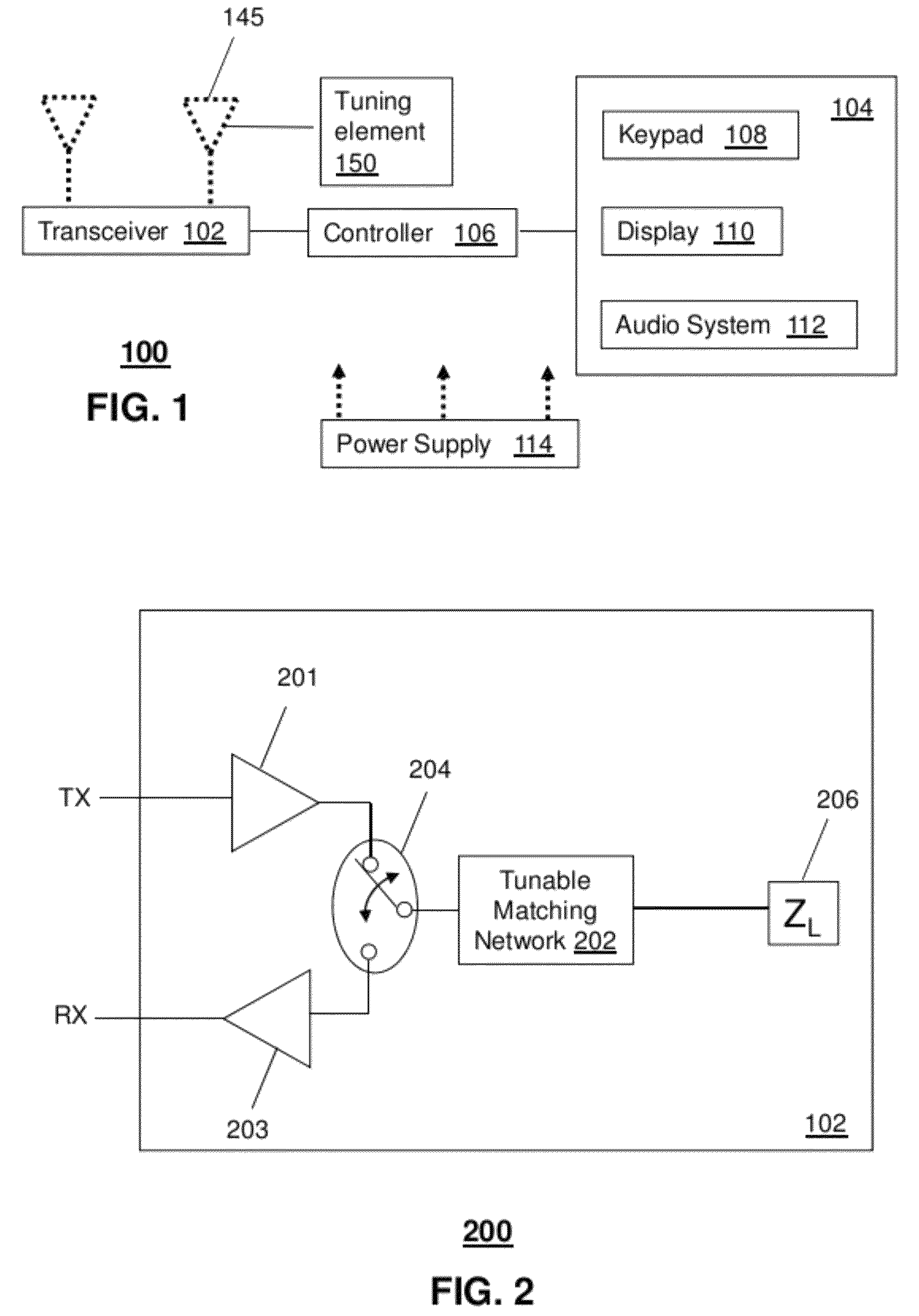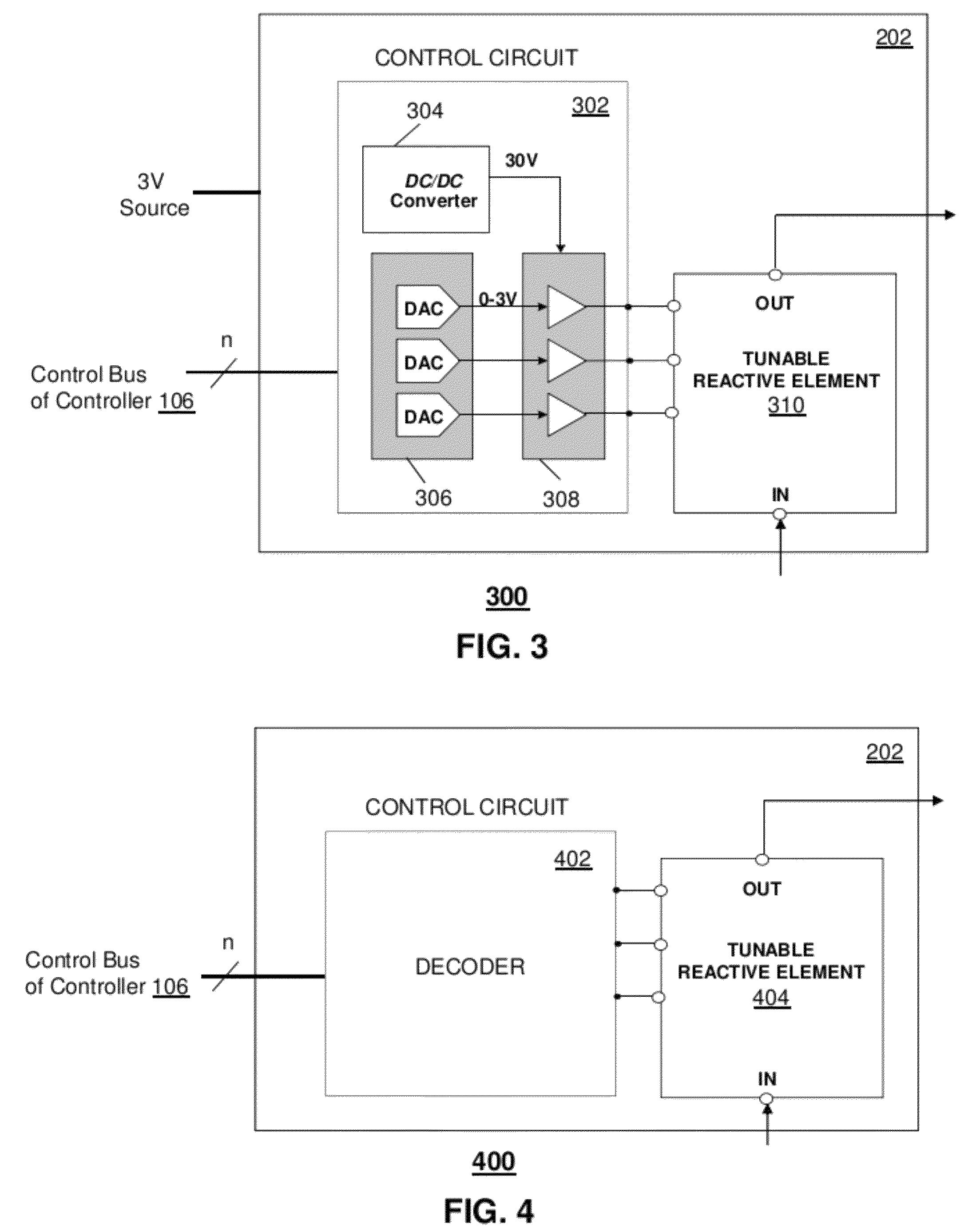Method and apparatus for tuning a communication device
a communication device and tuning technology, applied in the field of communication systems, can solve the problems of affecting the performance of antennas, and compromising the performance of antenna designers in some frequency bands
- Summary
- Abstract
- Description
- Claims
- Application Information
AI Technical Summary
Benefits of technology
Problems solved by technology
Method used
Image
Examples
Embodiment Construction
[0015]One or more of the exemplary embodiments described herein can have an antenna with a tunable element attached to the radiating elements of the antenna. The tunable element can be of various types, such as a Passive Tunable Integrated Circuit (PTIC) having one or more electrically tunable capacitors.
[0016]In one embodiment, the antenna can be directly tuned over frequency, moving the resonant frequency of the radiating element. By doing so, the magnitude of the VSWR that the antenna presents to the transceiver, can be adjusted, and can be kept within a range that is easier to match to the transceiver.
[0017]In another embodiment, on-antenna tuning can be combined with a tunable matching network such as positioned at a feed point of the antenna to achieve greater gains in total antenna efficiency as compared with utilizing either of these tuning methods separately.
[0018]In one embodiment, the tunable element on the antenna can be tuned using an open loop methodology, such as tuni...
PUM
 Login to View More
Login to View More Abstract
Description
Claims
Application Information
 Login to View More
Login to View More - R&D
- Intellectual Property
- Life Sciences
- Materials
- Tech Scout
- Unparalleled Data Quality
- Higher Quality Content
- 60% Fewer Hallucinations
Browse by: Latest US Patents, China's latest patents, Technical Efficacy Thesaurus, Application Domain, Technology Topic, Popular Technical Reports.
© 2025 PatSnap. All rights reserved.Legal|Privacy policy|Modern Slavery Act Transparency Statement|Sitemap|About US| Contact US: help@patsnap.com



